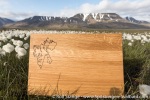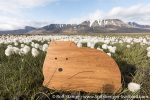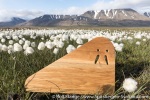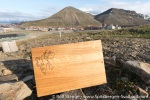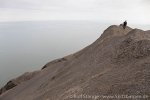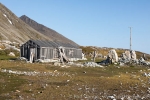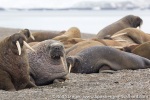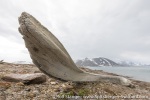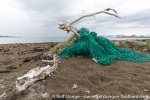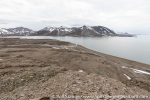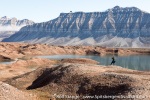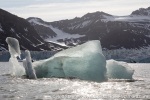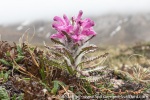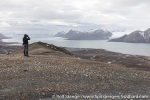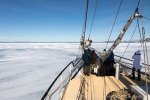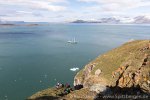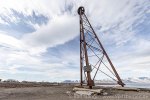-
current
recommendations- Liefdefjord
New page dedicated to one of Spitsbergen's most beautiful fjords. Background information and many photos.
- New Spitsbergen guidebook
The new edition of my Spitsbergen guidebook is out and available now!
- Liefdefjord
New page dedicated to one of Spitsbergen's most beautiful fjords. Background information and many photos.
Seitenstruktur
-
Spitsbergen-News
- Select Month
- April 2024
- March 2024
- February 2024
- January 2024
- December 2023
- November 2023
- October 2023
- September 2023
- August 2023
- July 2023
- June 2023
- May 2023
- April 2023
- March 2023
- February 2023
- January 2023
- December 2022
- November 2022
- October 2022
- September 2022
- August 2022
- July 2022
- June 2022
- May 2022
- April 2022
- March 2022
- February 2022
- January 2022
- December 2021
- November 2021
- October 2021
- September 2021
- August 2021
- July 2021
- June 2021
- May 2021
- April 2021
- March 2021
- February 2021
- January 2021
- December 2020
- November 2020
- October 2020
- September 2020
- August 2020
- July 2020
- June 2020
- May 2020
- April 2020
- March 2020
- February 2020
- January 2020
- December 2019
- November 2019
- October 2019
- September 2019
- August 2019
- July 2019
- June 2019
- May 2019
- April 2019
- March 2019
- February 2019
- January 2019
- December 2018
- November 2018
- October 2018
- September 2018
- August 2018
- July 2018
- June 2018
- May 2018
- April 2018
- March 2018
- February 2018
- January 2018
- December 2017
- November 2017
- October 2017
- September 2017
- August 2017
- July 2017
- June 2017
- May 2017
- April 2017
- March 2017
- February 2017
- January 2017
- December 2016
- November 2016
- October 2016
- September 2016
- August 2016
- July 2016
- June 2016
- May 2016
- April 2016
- March 2016
- February 2016
- January 2016
- December 2015
- November 2015
- October 2015
- September 2015
- August 2015
- July 2015
- June 2015
- May 2015
- April 2015
- March 2015
- February 2015
- January 2015
- December 2014
- November 2014
- October 2014
- September 2014
- August 2014
- July 2014
- June 2014
- May 2014
- April 2014
- March 2014
- February 2014
- January 2014
- December 2013
- November 2013
- October 2013
- September 2013
- August 2013
- July 2013
- June 2013
- May 2013
- April 2013
- March 2013
- February 2013
- January 2013
- December 2012
- November 2012
- October 2012
- September 2012
- August 2012
- July 2012
- June 2012
- May 2012
- April 2012
- March 2012
- February 2012
- January 2012
- December 2011
- November 2011
- October 2011
- September 2011
- August 2011
- May 2011
- April 2011
- March 2011
- February 2011
- January 2011
- December 2010
- November 2010
- September 2010
- August 2010
- July 2010
- June 2010
- May 2010
- April 2010
- March 2010
- February 2010
- November 2009
- October 2009
- August 2009
- July 2009
- June 2009
- May 2009
- April 2009
- March 2009
- February 2009
- January 2009
- December 2008
- November 2008
- October 2008
- August 2008
- July 2008
- June 2008
- May 2008
- April 2008
- March 2008
- February 2008
- April 2000
- Select Month
-
weather information

| THE Spitsbergen guidebook |
Home →
Yearly Archives: 2019 − News & Stories
Spitsbergen kitchen slats available again
The Spitsbergen kitchen slats are available again: a small number of all kinds has found its way from the workshop in Longyearbyen to the spitsbergen-svalbard.com shipping department near the Baltic Sea coast in Germany.

Spitsbergen kitchen slats from Longyearbyen, in Longyearbyen.
The slats are made from strong oak wood in Wolfgang Zach’s carpenters’ workshop in Longyearbyen. Their design is inspired by arctic wildlife: there is the polar bear (of course!), the walrus, the Spitsbergen reindeer, the whale (whichever kind of large baleen whale you like ☺) and the bearded seal. The latest addition is the polar fox, which is here available for the first time outside Longyearbyen. And finally, on my personal request (I am a geographer, after all) my favourite, the slat with the map of Spitsbergen.

Spitsbergen kitchen slats from Longyearbyen: the whole collection.
A must-have! 🙂
Please visit our online shop (click here) for further information.
Our breakfast boards on a visit to Adventalen 😉
- gallery anchor link: #gallery_1640
Click on thumbnail to open an enlarged version of the specific photo.
Our breakfast boards on a visit to Longyearbyen 😉
- gallery anchor link: #gallery_1643
Click on thumbnail to open an enlarged version of the specific photo.
Spitsbergen summer: summer weather, tourists, champagne glass, pride parade, new panoramas, Antigua tour photos & triplog
The summer is currently going calmy in Spitsbergen, mostly. Which is a good thing. The heat wave that seems to numb large parts of central Europe these days is not much of an issue in Spitsbergen. It is warm up there as well, around 10 degrees centigrade, and up 13 degrees are expected for tomorrow (Sunday) according to the Norwegian forecast on yr.no – pleasant temperatures, if you ask me. Certainly warm summer days in the Arctic, but not a record-breaking heatwave.
There is an ongoing debate in Longyearbyen about cruise ship traffic and tourists. There are days when several thousands of them are flooding the place, which has about 2500 inhabitants. No surprise that this is controversial.
People are also discussing when the champagne glass might break. This is a pretty conspicuous snow-field that you can see on Operafjellet, east of Longyearbyen. It has the shape of a champagne glass. When the snow-melt has advanced far enough, then the stem will “break”. Once this is the case, then it is summer in Longyearbyen, according to an old tradition. There is an annual competition arranged by Svalbardposten, the local newspaper, where you can have your guess when exactly the stem will break. This is usually the case in late July.

The “champagne glass” on Operafjellet east of Longyearbyen.
The first local initiative to arrange a pride parade in Longyearbyen is largely met with enthusiasm, but there are also some critical voices on the usual social media platforms, including some hate comments. Well, why should people in the Arctic generally be any better than elsewhere in the world.
Nature lovers amongst locals and tourists are currently enjoying many encounters with whales in Isfjord and elsewhere, including blue whales, fin whales, humpback whales and white whales (belugas). And there are some rare visitors to the Longyearbyen area. Currently, there is a group of ruddy shelduck, which according to Wikipedia have their “main breeding area … from southeast Europe across central Asia to Lake Baikal, Mongolia, and western China”. This does obviously not include Spitsbergen, so the ruddy shelducks that are regularly seen these days between Bjørndalen and Adventdalen have lost track. It is, as far as we know, the second time that this species is observed in Spitsbergen. And it is not the only recent rare bird sighting. There has been that tundra swan in Adventdalen and a tufted puffin on Bjørnøya. According to experts, this increase of rarity observations indicates an increased density of observers out in the field rather than any changes in the natural world. This is a good thing – we are out there in nature and we are learning while being there.
All in all, it is the usual walk of life in the Arctic as of 2019.
This leaves some time to get other things done as well. The Spitsbergen panorama selection has received some new entrants:
New Spitsbergen-panoramas
- Fjortende Julibukta in Krossfjord, captured during the recent voyage with Antigua in July. A beautiful places with many flowers, an impressive glacier, a bird cliff and generally stunning scenery, and a popular destination for expedition ships.
- Markhambreen on the east coast of Spitsbergen. A very interesting place with a fascinating landscape development, and definitely well off the trodden path.
- Coastal cave on Blomstrandhalvøya.
- Nye gruve 2 (new mine 2) in Longyearbyen, also called father christmas mine (julenissegruve in Norwegian).

Markhambreen: a rarely visited glacier on the east coast of Spitsbergen. One of several new entries in the Spitsbergen panorama collection on this website.
And: several new pages are now online displaying selections of photos illustrating a long and exciting recent voyage on SV Antigua. Click here to join us under sail in the Arctic!
Daudmannsodden-Ymerbukta – 11th July 2019
Thu
11 Jul
2019
The last day – time is flying! We have made good speed and arrived outer Isfjord in the early morning, so we continued a few miles to the north, into Forlandsund (how many times did we sail through Forlandsund on this trip ..?). We went ashore in one of the beautiful bays on Spitsbergen’s west coast, and after a full day at sea, it was good to get some tundra under our rubber boots again! Next to all the beautiful flowers and wildlife of the tundra, we found remains of a dead sperm whale on the beach and a lepidurus glacialis (no idea about the common name) in a little lake.
Gallery – Daudmannsodden-Ymerbukta – 11th July 2019
- gallery anchor link: #gallery_1577
Click on thumbnail to open an enlarged version of the specific photo.
Later, we went ashore once again, then in Ymerbukta. Some of us walked along the shore towards the glacier and others crossed the huge moraine to enjoy silent views of the arctic nature. Time to say goodbye – for this time. It was great, big thanks to all of you who were part of it!
Sørkapp – 10th July 2019
Wed
10 Jul
2019
A relaxed day at sea. We have got a lot of miles to cover from northern Storfjord back to Isfjord, and we don’t have an awful lot of days left.
Gallery – Sørkapp – 10th July 2019
- gallery anchor link: #gallery_1574
Click on thumbnail to open an enlarged version of the specific photo.
The south cape (here some panoramas) passage is nice and calm, so we can spend time in the lecture hall to elaborate on the polar fox, sea ice, trappers and the arctic seasons.
Ginevrabotnen – 09th July 2019
Tue
9 Jul
2019
A long stretch took us up to Ginevrabotnen last night. This is the northernmost part of Storfjord, north of Barentsøya. There is still quite a bit of drift ice in this area. We have arrived in the high arctic! The weather is calm and clear, it is overcast, but beautiful. Almost a bit melancholic. Very fitting for this high arctic environment.
Gallery – Ginevrabotnen – 09th July 2019
- gallery anchor link: #gallery_1571
Click on thumbnail to open an enlarged version of the specific photo.
We get to do a lovely Zodiac cruise in the ice, but later, the clouds come down and turn into fog. Then there comes wind on top of it. Altogether, it is a rather unpleasant combination. We have to scrap a landing on Barentsøya which we had planned originally.
A visit to the Würzburger Hut at Sundneset/Barentsøya can be done online here.
East coast: Markhambreen & Kvalvågen – 08th July 2019
Mon
8 Jul
2019
Finally we have left the west coast behind – as beautiful as it is there! But now on to something different. Wild and rough, somehow more arctic. It is not a gentle landscape here in the east. Almost hostile, this coast of steep rock cliffs and glaciers.
But now the weather is on our side, at least for today. The south cape was calm last night, and now it is calm here in Storfjord. We make use of the rare opportunity to have a close look at Markhambreen. One of those glaciers on the east coast that has retreated in recent years to give way to a beach and a little bay. Just as Crollbreen and Emil’janovbreen further north. But to our surprise we found that even more recently Markhambreen has advanced again, so there is no bay anymore! Luckily it was calm enough to land on the outer, exposed side of the beach. The ice cliff that is now resting on the landward side of that beach is pretty wild and crevassed, with a little push end moraine towards the beach.
Gallery – East coast: Markhambreen & Kvalvågen – 08th July 2019
- gallery anchor link: #gallery_1568
Click on thumbnail to open an enlarged version of the specific photo.
A few hours later we went ashore at Boltodden in the large bay of Kvalvågen. A fascinating coastal landscape with huge blocks of quarzitic sandstone, and of course the geological highlight, the dinosaur footprints!
We made some walks along the coast, into a silent valley and up to some mountain peaks with stunning views to dive deeper into this amazing, high-arctic environment. Dinner just had to wait a while today …
Hyttevika – 07th July 2019
Sun
7 Jul
2019
Finally, a weather window has opened up between all these low pressures that have been passing through here now. According to the forecast, we should have some calm days ahead of us now. So let’s go down south and around the south cape!
The sea was calm and the sun was shining, so we didn’t want to miss the opportunity to make a landing in Hyttevika. One of the most beautiful places in Spitsbergen! The scenery is stunning, and it is a perl of arctic nature. Ten thousands of Little auks are breeding on the slopes, filling the place with life and noise. The tundra is green and lush and the reindeer are fat and numerous.
Gallery – Hyttevika – 07th July 2019
- gallery anchor link: #gallery_1565
Click on thumbnail to open an enlarged version of the specific photo.
This is where Wanny Woldstad wintered several times from 1932, the famous female polar bear hunter from north Norway.
Now we have set coures for the south cape. The sea is calm and the sun is shining, and we are looking forward to the east coast of Spitsbergen!
Isfjord – 06th July 2019
Sat
6 Jul
2019
Back in Isfjord – again. Our hide-and-seek with the wind. Well, today we are not really hiding from the wind. We are steaming against a force 7 into Ymerbukta, where we spend some time near Esmarkbreen. Later, while at anchor, we get some impressive gusts. The anchor is dragging while I lecture about geology.
Gallery – Isfjord – 06th July 2019
- gallery anchor link: #gallery_1562
Click on thumbnail to open an enlarged version of the specific photo.
Later, the wind is on our side: filling the sails as we move across Isfjord, towards Barentsburg. There, we spend an interesting afternoon and a cheerful evening in the bar of the brewery.
Forlandsund – 05th July 2019
Fri
5 Jul
2019
It does not happen too often that we visit one and the same place twice during one trip. But today, we are back at Sarstangen, where we started – feels like months ago! Back then, we had the two polar bears, which was great, but … we could obviously not visit the walruses. But today was the day for that.
Additionally, we cleaned up a section of the beach, so a lot of marine plastic litter is now removed from the beach and stowed in bags on deck on Antigua.
Gallery – Forlandsund – 05th July 2019
- gallery anchor link: #gallery_1559
Click on thumbnail to open an enlarged version of the specific photo.
Later, we anchored in Selvågen on Prins Karls Forland. Every once in a while, a few raindrops where fallling, but not too much, and other than that, the clouds made for a beautiful, quiet, almost melancholic atmosphere. We could make some lovely walks and hikes across the tundra plains and up to some hills for stunning views.
Also in Selvågen, there was less plastic on the beach after our departure than before. The deck is filling up with old fishing nets.
Isfjord – 04th July 2019
Thu
4 Jul
2019
Right place, right time – again! We can enjoy the fascinating landscape on and around Coraholmen in brilliant sunshine. It is almost too warm!
According to the weather forecast, Isfjord should have been calm as a lake today. This is not really the case, but nevertheless we make it ashore on an exposed beach at Bohemanneset. A stunning place with beautiful flowers, interesting geology and great panoramic views.
Gallery – Isfjord – 04th July 2019
- gallery anchor link: #gallery_1580
Click on thumbnail to open an enlarged version of the specific photo.
We make full use of the nice day and make an evening Zodiac tour to Sveabreen. Later, we can enjoy a fantastic BBQ that the galley team has arranged for us. Heads off!
Dicksonfjord – 03rd July 2019
Wed
3 Jul
2019
We have moved into some of the inner branches of Isfjord to enjoy some fantastic scenery although the weather is actually quite grey. Still, it is beautiful. And we meet a pod of Belugas in reddish meltwater.
Kapp Smith was one of the places where the age of systematic science and exploration began in Spitsbergen: this is where the Norwegian photogrammetric expedition of 1936 was based. Airplanes rather than dog sledges. Today, turnstones and arctic terns live on the beautifully colourful tundra.
Gallery – Dicksonfjord – 03rd July 2019
- gallery anchor link: #gallery_1556
Click on thumbnail to open an enlarged version of the specific photo.
Many of us hike from Dicksonfjord to Ekmanfjord, following a colourful carpet of various flowers. The rocks are full of fossils, others consist of white anhydrite („gypsym“). Pink-footed geese are breeding in flat tundra areas, and red-throated divers are sitting on a small lake.
We spend a beautifully calm night at anchor, while the clouds are coming down lower and lower.
St. Jonsfjord – 02nd July 2019
Tue
2 Jul
2019
The main point in out planning is still to avoid the areas of strong winds that are currently raging in several parts of Spitsbergen. The low pressures are passing through one by one, without a break.
But we are doing pretty well so far. Today, this brings us to St. Jonsfjord, which turns out to be the place to be for today. The first hike yields beautiful views on mountains, glaciers and the fjord, with plenty of beautiful flowers.
Gallery – St. Jonsfjord – 02nd July 2019
- gallery anchor link: #gallery_1553
Click on thumbnail to open an enlarged version of the specific photo.
Later, we pass a large, quite active glacier and many small icebergs. Coincidence takes us then to a place where a retreating glacier has created a fascinating lagoon landscape. A strong tidal current rushes through the curved channel that connects the lagoon and the fjord. 288 metres altitude provide a stunning panorama over the whole fjord area.
Krossfjord – Kongsfjord – 01st July 2019
Mon
1 Jul
2019
We had been hoping for a good hike in Krossfjord. What we get instead is a lot of wind, wind and even more wind.
It is a bit more calm at Lilliehöökbreen – and very impressive. An ice cliff, several kilometers wide, and two huge calvings.
Gallery – Krossfjord – Kongsfjord – 01st July 2019
- gallery anchor link: #gallery_1550
Click on thumbnail to open an enlarged version of the specific photo.
Our next bet is Möllerfjord, but no luck here either. So we put everything on Kongsfjord. And here things are indeed better, so we get a lovely afternoon walk on Blomstrandhalvøya. Stunning rocky coastal scenery with a little cave.
Drift ice edge – 30th June 2019
Sun
30 Jun
2019
We have got good sailing wind to bring us northwards to Magdalenefjord, where we anchor late in the night and then wake up with sunshine and two polar bears in view. Then we continue northwards, to the ice edge. It is not far, north Spitsbergen is still completely in ice. We meet the drift ice edge in Smeerenburgfjord. Rugged mountains make the background scenery, and the sun is shining. Stunning!
Gallery – Drift ice edge – 30th June 2019
- gallery anchor link: #gallery_1547
Click on thumbnail to open an enlarged version of the specific photo.
Passing Smeerenburg and Virgohamna, we sail westwards to the open sea and then turn north. See how far we get. Well, not far at all. We don’t make it to 80 degrees. Ice, wind and poor visibility as soon as there is ice.
We don’t stay long, then we set sail and course to the south.
Kongsfjord – 29th June 2019
Sat
29 Jun
2019
Another beautiful day – something you should not take for granted here in Spitsbergen these days, considering the weather forecast. There are some strong low pressures around in the north Atlantic. But Kongsfjord was the right place at the right time. We spent the morning sitting high up at a bird cliff, enjoying stunning views and a lively concert of Brünich’s guillemots and kittiwakes.
Gallery – Kongsfjord – 29th June 2019
- gallery anchor link: #gallery_1544
Click on thumbnail to open an enlarged version of the specific photo.
Also Ny-Ålesund was quite lively, especially in and around Kongsfjordbutikken, with a large group of tourists from eastern Asia. Very lively. A slightly different kind of arctic tourism. It seems to be in their nature to be … efficient. In other words: soon it was calm again, so we could turn our attention to the airship mast and the history of the north pole expeditions.
News-Listing live generated at 2024/April/25 at 08:06:06 Uhr (GMT+1)
